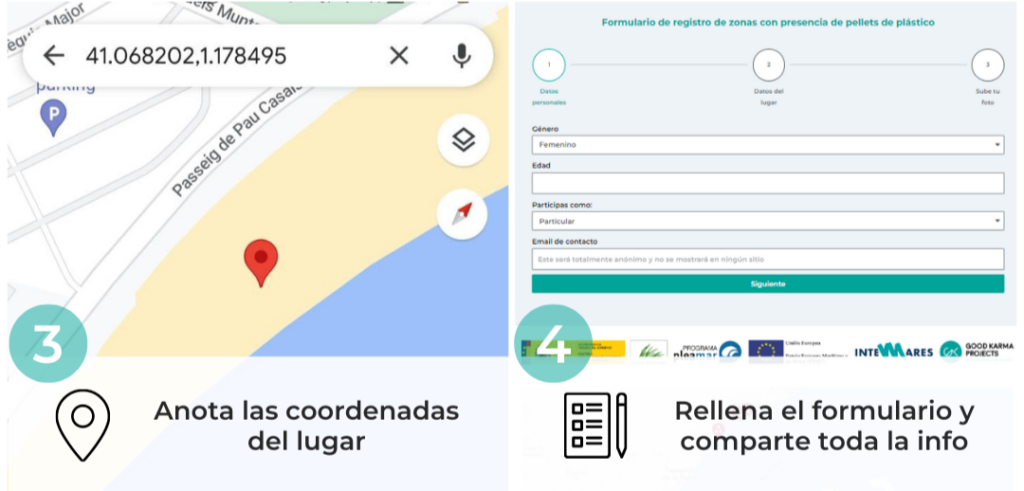Have you found plastic pellets? Share the location
Help us to identify points affected by plastic pellet contamination for further research! Discover the points already identified on the following interactive map.


RELLENA EL FORMULARIO:
¡IMPORTANTE!: te recordamos que para que los datos sean válidos es necesario que la fecha sea del día que se detecta la contaminación y que la foto sea de los pellets tal y como los has encontrado colocando un objeto de referencia al lado (bolígrafo, moneda, billete, regla, etc). También que las coordenadas tengan un formato correcto y que hagas una estimación del área que ves afectada por pellets de plástico (una zancada no muy larga equivale a 1 metro).
Formulario de registro de zonas con presencia de pellets de plástico
FAQs
Plastic pellets, also known as nurdles or mermaid’s tears, are small spheres that are used as a raw material in the manufacture of almost all plastic items. Due to their small size (normally less than 5 mm) and poor practices, pellets are often “lost” at all stages of the plastic production and distribution chain (production, transport, recycling…).
Without touching the pellets, as you found them in the ground, place a reference object next to them (key, pencil, glasses…) and take a picture. Above all, don’t touch the pellets, we want to see them as you found them.
Yes, this form is only to identify areas of pellets accumulation. For other types of waste there is the Clean Ups form.
No! The more data we can get from more places, better!
Any area where pellets are present is valid!
You will only need the photo taken of the pellets, just as you found them with a reference object next to them, the affected area in m2, and the coordinates.
One pellet in the environment is already a problem for the environment, so as long as we can collect even a few, we are helping to stop this problem. Unfortunately, pellets go into the grey bin because there are no systems in operation to recycle them, as each pellet can be made of a different type of plastic.






